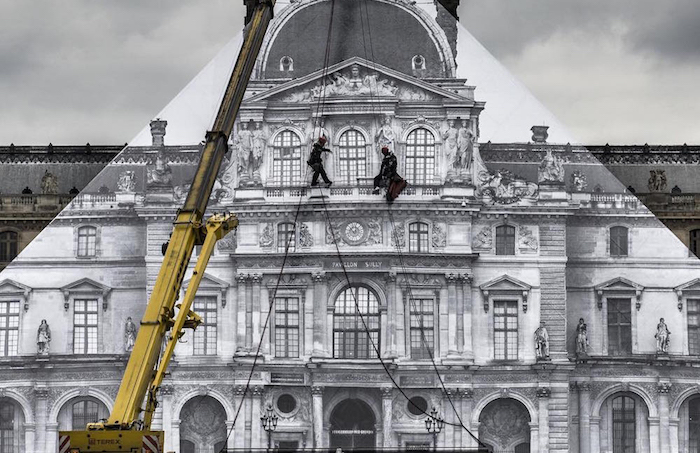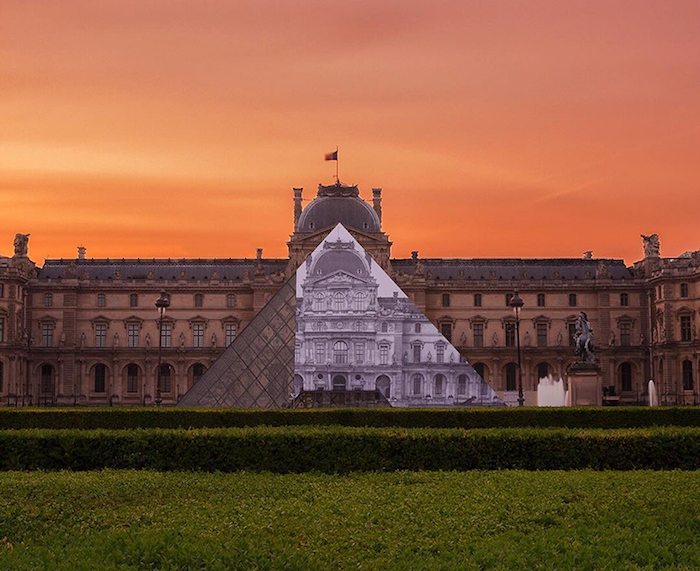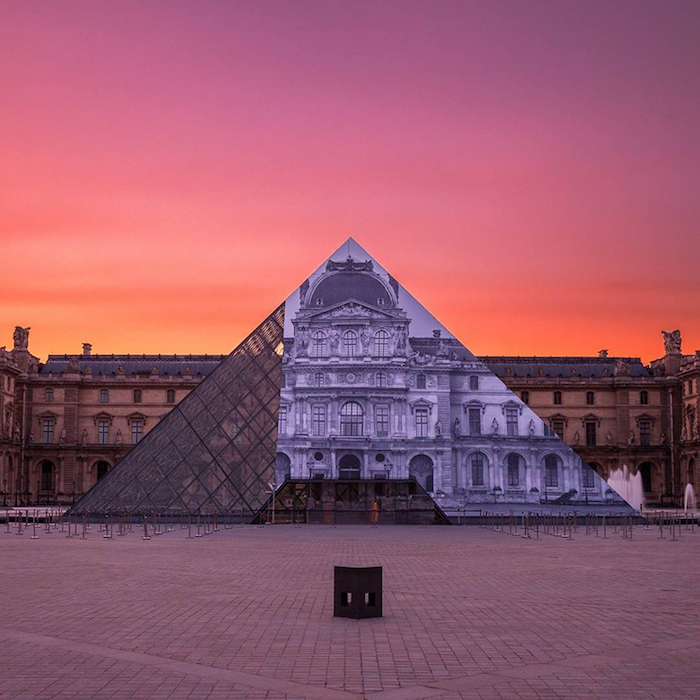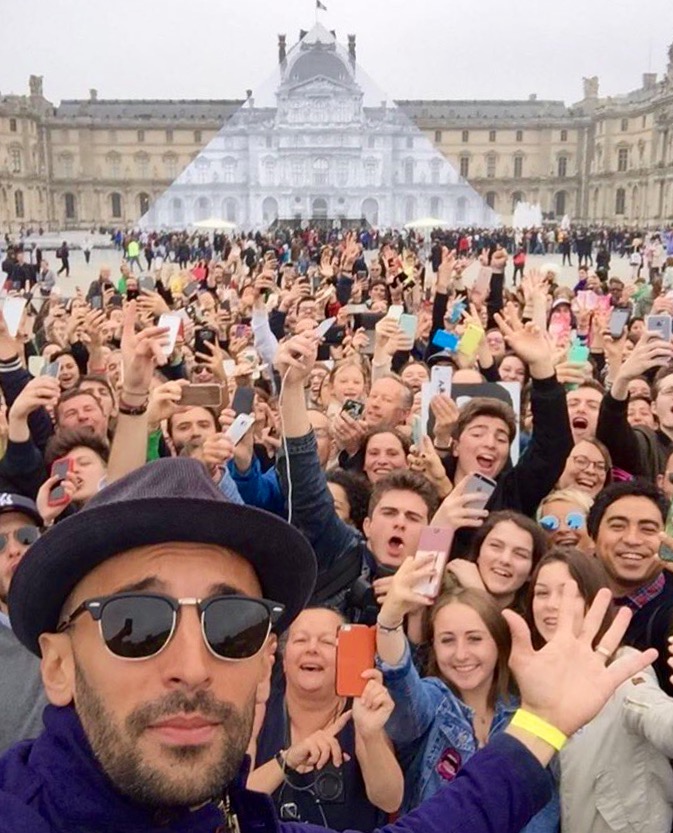
In Paris, the iconic pyramid that serves as the main entrance to the Musée du Louvre seems to have temporarily disappeared. The illusion is the result of an anamorphic installation by the street artist JR.

JR is a French photographer and graffiti artist known for large photo installations in public places, typically as a form of activism or social critique. His Portrait of a Generation project documented residents of Paris suburbs during the 2005 riots. The first exhibition was illegally flyposted, but was later made official with an installation at Paris’ Hôtel de Ville. Subsequently, JR has developed several ongoing projects and dozens of international exhibitions.

At the Louvre, JR continues Unframed, a project that reinterprets archival images expanded onto buildings. He has covered the west side of the Pyramide du Louvre with a historical image of the Pavilion Sully behind it. From a viewpoint in the Cour Napoléon, the image covering the 70-foot pyramid aligns into an anamorphosis – a distortion of perspective – so that the pyramid disappears against the historic façade. The clever intervention may reignite a perennial debate on modernism and architecture in Paris.

The metal and glass pyramid became the main entrance to the museum in 1989 as part of a massive project, commissioned by François Mitterrand and designed by I.M. Pei, to renovate the Louvre and expand its capacity. The pyramid was incredibly controversial at the time, inspiring every kind of criticism before it was even built. A 1985 article in the New York Times labeled it “an architectural joke, an eyesore, an anachronistic intrusion of Egyptian death symbolism in the middle of Paris, and a megalomaniacal folly.” Ouch. It has, however, become one of the city’s most photographed monuments. Le Figaro reports that it is the Louvre’s third most popular work after the Mona Lisa and the Venus de Milo.

This is the first of JR’s public projects without portraits, but it does not preclude the interaction of people. In order to photograph the pyramid, or the illusion of no pyramid, visitors must observe and move around it. A particular spot in the Cour Napoléon now replicates the Salle des États, where selfie-taking tourists crowd to photograph the Louvre’s most popular artwork. This an active and participatory experience, or at least the Instagram hit of the summer.
JR au Louvre opened on May 25 and continues through June 27, 2016.